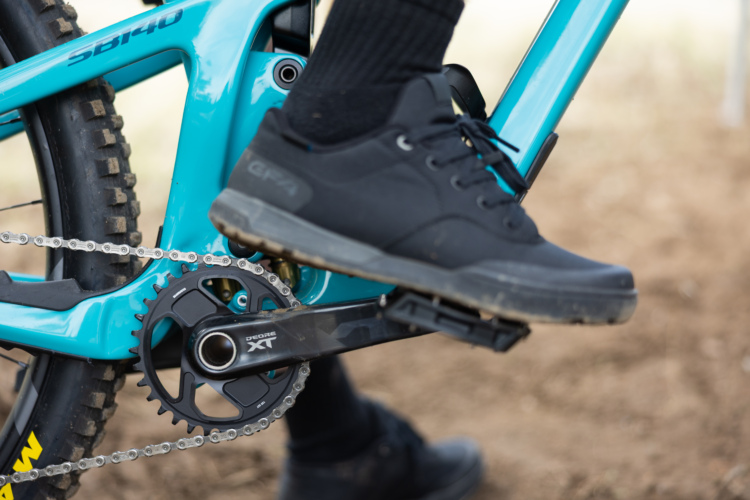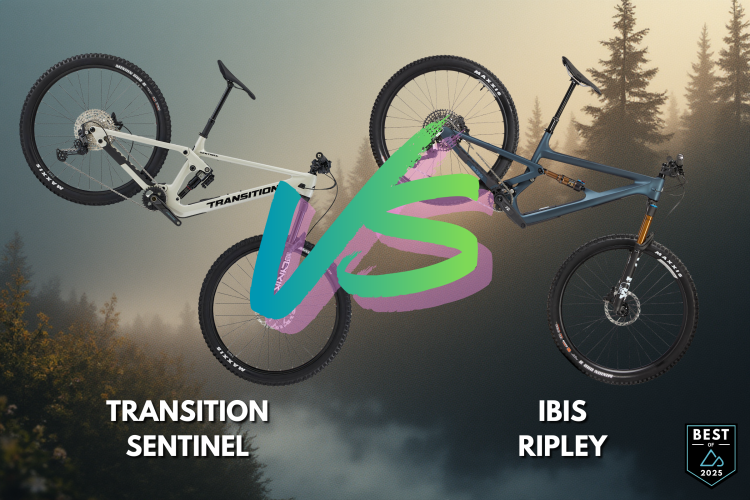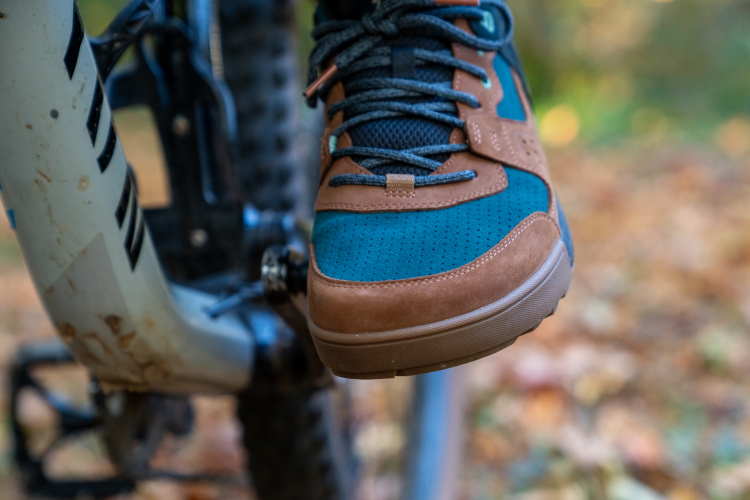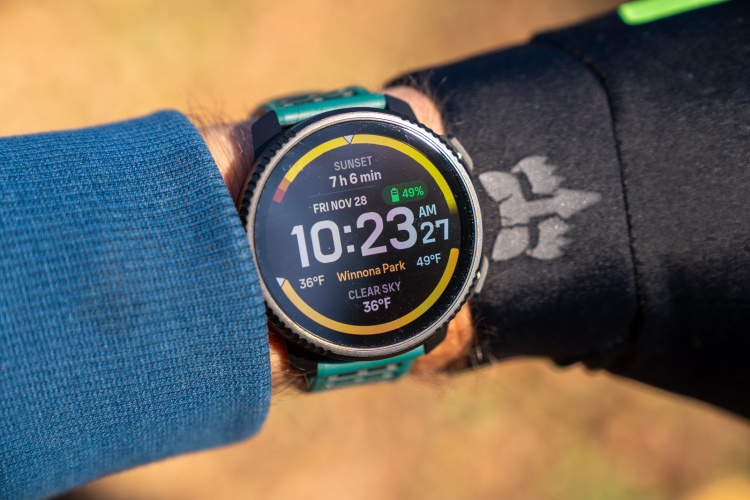
Perhaps the only thing surprising about Shimano’s new wireless electronic drivetrain is how long it took to arrive. Then again, maybe not. The Japanese brand is known for producing robust and meticulously designed products that are built to last, and that takes time.
Over the past few months, I’ve logged hundreds of miles on the system, moved everything from one bike to another, and have dug into the tech specs to understand what makes the Shimano XTR Di2 wireless drivetrain unique. It’s unusual for a company to release such an important product to the media this far in advance, and if anything, it shows how confident Shimano is in their new flagship mountain bike drivetrain.
- A seismic launch
- Derailleur hangers aren’t dead
- Updated clutch is clutch
- Compatible with existing Shimano drivetrain parts
- Derailleur deets
- This shifter is electronic, but feels like it’s mechanical
- Crankset upgrades
- Weights and pricing
- Durable and reliable
- Pros and cons of Shimano XTR Di2 Wireless
- Bottom line
Shimano XTR Di2 Wireless key specs
- Weight: 1,716g as tested
- Price: $2,030 for the complete drivetrain; $985 for an upgrade kit with wireless shifter, derailleur, battery, and charger
- Buy from Jenson USA and Shimano retailers
A seismic launch
The Shimano product development team faced enormous pressure to design a better XTR drivetrain, and knew they needed “something absolutely seismic,” Nick Murdick told a group of journalists back in February. Though SRAM had a two-year head start on Shimano in the wireless electronic drivetrain space, the XTR design team was able to use that time to address some of the complaints they were hearing from consumers about wireless electronic drivetrains.

Derailleur hangers aren’t dead
Though many riders were happy to bid farewell to the derailleur hanger, a small but vocal minority, including yours truly, weren’t ready to say goodbye. As it turns out, the Shimano engineers weren’t ready to give up either.
“The engineers came back and said, ‘there are some key riding situations where we need a derailleur hanger. We don’t have an answer if we make a frame-mounted derailleur,'” Murdick said. He went on to note that the decision to use a hanger with XTR Di2 was engineering-driven, rather than a response to any patent considerations.
So, the XTR Di2 wireless derailleur is designed to work with a universal hanger, but not just any hanger. The designers set their sights on pairing the derailleur with a strong, fully aluminum hanger that’s stiff enough to handle multiple impacts and shipping mishaps, but not quite as strong as the XTR derailleur itself.
This seems like a reasonable middle ground: make derailleurs and hangers more robust, while allowing the hanger to provide a failsafe against catastrophic damage to the derailleur, or worse, your carbon frame.

The XTR derailleur has more tricks up its sleeve
Easily the biggest party trick the XTR Di2 derailleur has up its sleeve is its ability to glance off rock strikes and regain its position on the fly. Shimano slimmed the derailleur body down to reduce the chance of impact, and gave it a wedge shape that makes it less likely to get snagged when it does strike an obstacle. Even then, the derailleur has free rotation backward, allowing it to absorb an impact before returning to position.
Sticks are another notorious derailleur killer. A couple of weeks ago, while riding in Arkansas, Leah’s derailleur cage exploded on the trail because a pencil-sized stick got sucked into her pulleys. Needless to say, it was not a fun walk back to the car.

The new Shimano XTR derailleur utilizes solid pulley wheels, which the brand says reduces the chance of sticks getting caught. It seems like an easy fix, though I suspect solid wheels add a few grams over spoked pulley wheels.
Two XTR groups: enduro and XC
Enduro riders are especially tough on bikes and derailleurs, and to reduce the chance of a catastrophic failure, many choose to run short-cage derailleurs for an extra bit of ground clearance. Shimano is also offering the XTR Di2 wireless group in a 9-45t kit (not tested) that includes the short-cage derailleur. With this gearing range, riders save weight thanks to a smaller cassette and shorter chain. Some will choose to run a smaller chainring up front, too, which also improves clearance. The XTR enduro group offers crank arm lengths as short as 160mm, compared to the XC-focused XTR group that only goes down to 165mm.

Updated clutch is clutch
The Shimano XTR Di2 wireless derailleur features an updated clutch design that uses two springs to keep tension on the chain. It’s always on; there’s no lever to flip (or forget to flip) to engage it. The new clutch doesn’t require much, if any, maintenance either, unlike the previous design.
The upshot to the updated clutch is improved chain wrap, which is a key to making the 9t ring on the compact cassette viable. It does make swapping wheels a smidge more involved, and I got my fingers pinched a couple of times before I learned to live with the always-on clutch.
“It’s a stronger spring that is about the same amount of tension as the breakaway force on a clutch system,” Murdick said. “But that tension is there all the time.”



Compatible with existing Shimano drivetrain parts
One of the key selling points for Shimano XTR Di2 wireless is that it’s compatible with many existing Shimano drivetrain parts, including cranksets, cassettes, bottom brackets, and chains. A $985 upgrade kit is already available, and it consists of a derailleur and shifter for those who already own compatible Shimano parts. In contrast, SRAM’s wireless electronic drivetrain, Eagle Transmission, requires a Transmission-specific cassette, crankset, and even a special T-type chain.
Compatible Hyperglide+ cassettes deliver fast, consistent shifts with the new XTR Di2 derailleur. Basically, the system doesn’t have to wait for the shift to finish before it starts driving the next gear. With Hyperglide+, riders can shift multiple gears at once, and the controller can be set to execute single, double, or multiple shifts at the press of the trigger.

Derailleur deets
The electronic Shimano XTR Di2 wireless derailleur is powered by a 305mAh battery that fits securely behind a latching door. The battery offers slightly more capacity than the AXS batteries from SRAM, and Shimano says riders can expect to get about 210 miles of use from a single charge. That sounds about right based on my testing, though range will largely depend on how often you’re shifting.
Though the design keeps the battery secure and sealed against the elements, the mechanism can be tough to operate. You need to slide a thin, spring-loaded latch located underneath the body while simultaneously pulling the door outward. There’s enough resistance from the seals that it makes me wonder if I’m even pulling in the right direction almost every time I try to remove the cover. It’s also not immediately clear how to orient the battery, though I’ve since learned to line up the arrow printed on the battery with the arrow marked on the derailleur body.

Still, I can’t argue with the effectiveness of the design. There are some pretty serious scratches on the cover, though there’s no sign of any actual damage to the derailleur. Charging the battery is easy enough, and you can use the Shimano app or a connected device like a Garmin GPS to let you know when the battery is getting low.
One problem early SRAM Eagle Transmission adopters noticed was that long drives to the trailhead would drain the derailleur battery unnecessarily. Rather than rely solely on a motion sensor to wake the derailleur, Shimano’s system requires a press of the shifter to confirm the bike is being ridden, and not just sitting on the back of a bouncing vehicle.
The Shimano XTR Di2 wireless derailleur is chunkier in appearance than its mechanical sibling. The lines are a bit more rounded and less angular this time around, more Dura Ace than XTR. Also, there’s no mistaking the high-pitched whine of the servo motors with each shift. It’s not any noisier than the other electronic derailleurs out there, but the shifts are certainly louder than a purely mechanical system.
Midway through my testing, I moved the entire drivetrain from a Yeti SB140 to a Canyon Neuron. Aside from adjusting the chain length, I made zero adjustments to the derailleur. Everything just worked, and worked flawlessly from one bike to the next.

This shifter is electronic, but feels like it’s mechanical
Shimano tested multiple shifter prototypes for their wireless electronic system, though it wasn’t until they came up with a mechanical controller that they were able to satisfy more than half of the test users. Riders have spent decades getting used to shift levers that press in and away from the bar, and switching to electronic buttons with very little tactile feedback can be jarring.
Ahead of my first test ride, one of the Shimano reps asked if I thought the controls felt natural, and similar to a mechanical Shimano shifter. I had to admit that it had been some years since I used a mechanical Shimano shifter regularly; my mind had been reprogrammed to press buttons instead of levers.

Yet, I do think Shimano is onto something with their mechanical-electrical controller that’s not just about satisfying the old timers. Somehow, the mechanical shifter does feel more intuitive, and I found there was a much shorter (re-)learning curve than when I first tried AXS, which to this day still feels backward to me every now and then.
I set up my controller to allow double shifting, which is nice and fast. However, I found that it’s difficult to select just a single gear in this configuration; there just isn’t quite enough feedback from the lever to let you know how hard to press. For that reason, I prefer single shift mode, which still allows you to hold down the lever to multi-shift for faster, sweeping gear changes.

Not only does the XTR Di2 shifter feature mechanical levers, but those levers are adjustable. You can swing and twist the paddle levers to fit your hands, which is a feature seldom seen outside of bespoke options like this one. In the Shimano app, you can swap the lever functions so that the top shifts gears up, or vice versa. Overall, the Shimano app is a little clunky, but it gets the job done.

A third button
In addition to the two levers, the XTR Di2 shifter has a third, programmable button. By default, holding this button down puts the derailleur into trim mode so you can make micro-position adjustments inward or outward using the paddles. You can also use the third button to control other devices; for example, you could set it up to scroll through the screens on a connected Garmin GPS unit. Or, it could be used to control a bike light.
At the risk of making the controls overly complicated, I’d love to see additional buttons that could control a dropper post, start and stop a camera, and operate a light and GPS. This could serve to clean up the cockpit and make it easier to keep our hands on the bars at all times.
The shifter, which runs on two coin-cell batteries, communicates with the derailleur wirelessly via a 2.4Ghz signal. Shimano says this is faster than their previously wired Di2 drivetrain system, which had to relay signals across a centralized battery and controller.


Crankset upgrades
The latest Shimano XTR crankset is the brand’s “lightest hollow-forged crankset yet.” I tested the enduro-targeted crankset with a 176mm Q-factor. The Q-factor is a measure of the distance between the two outer edges of the crank arms on a bike. The XC crankset has a slightly narrower 168mm Q-factor for riders who are used to training on road and gravel bikes that have similarly narrow spacing.
The enduro cranks feature a 55mm chainline and are available in 160, 165, 170, and 175mm lengths. Direct mount chainrings are available in sizes between 28t and 38t.
The crankarms are showing signs of wear, including scratches and small dents. I’m not worried, however, since they are made from aluminum rather than carbon fiber.

Weights and pricing
The electronic Shimano XTR Di2 drivetrain group I’ve been testing weighs just over 1,700g. That’s a bit less than a SRAM X0 Eagle Transmission group, but nearly 200g more than a mechanical Shimano XTR group.
| Weight | Price | |
|---|---|---|
| Cassette 10-51t | 364.6g | $500 |
| Crankset with 32t chainring | 585g | $450 |
| Derailleur + battery | 414.8g | $665 |
| Shifter (includes bolt) | 100.7g | $220 |
| Chain (116 links) | 250.6g | $85 |
| TOTAL | 1715.7g | $1,920 |

Durable and reliable
As I said at the start, I’m really surprised (and impressed) that Shimano provided access to the new group so far ahead of the official launch. From the deserts of Tucson to the Pisgah forest, the new XTR Di2 wireless drivetrain worked flawlessly.
A few curious friends hopped on my bike to give the drivetrain a spin. I’m not sure what they were expecting, but everyone concluded the new XTR drivetrain feels surprisingly familiar, yet refined. It’s exactly what you would expect, even if you were expecting it to have arrived much sooner than it did.
Share your Shimano XTR Di2 Wireless review
Pros and cons of Shimano XTR Di2 Wireless
Pros
- Familiar feel and similar performance to mechanical XTR
- Easy to set up
- Durable yet also lightweight
- Lots of options to customize your setup
Cons
- Priced for high-end of the market, no mid-range option
- Swapping batteries takes some effort
Bottom line
The Shimano XTR Di2 wireless drivetrain is worth the wait and proves that there’s more than one way to go electronic. For those who still prefer mechanical drivetrains, this one is about as close as you can get to a mechanical feel and durability while gaining electronic advantages like easy setup and customization.











1 Comments
Jun 5, 2025